#antidracoprescriptivism
Explore tagged Tumblr posts
Note
What do you think the most important qualities for a dragon are? As in, what set of features make something read as “Dragon” to you?
I have no idea when you sent this ask, so I apologize if I kept you waiting for long because I just saw this.
That's really an interesting question, I don't think it's one thing. A snake with unusual features like wings or horns often reads like a dragon to me, unless it's too realistic. Most creatures with a typical modern western dragon bodyplan with four legs and wings read like a dragon as soon as they have a serpentine tail and long neck (so no griffins). Anything birdlike reads like a dragon if it has some reptilian elements. The more I think about it, the less I can put it into words.
Also, and this one definitely comes from my readings about literature and history, the role is important. If it's something the hero has to overcome in order to get gold, water, women, etc, chances are that it's a dragon.
#this is one of those questions that get harder to answer the more you learn about the topic#antidracoprescriptivism
2 notes
·
View notes
Text
youtube
0 notes
Text
It's the same with monsters. The wyvern/dragon distinction means nothing outside d&d (and to a lesser extent it's source, British Heraldry, which didn't specify that wyverns are venomous and dragons more intelligent), but people try to shoehorn every dragon from movies and video games and sometimes even mythology into that framework.
So again for the people in the back: D&D classifications are not universal. You can use them in your writing, but don't try to fit unrelated fiction or traditions into them.
People who treat D&D's classes as like being in any way representative of fiction outside of D&D are my nemesis, I just saw a post that was like "remember the difference between a Sorcerer a Warlock and a Wizard is this" and treating like those words as if their very D&D specific meanings were like universally accepted I'm going to start taking hostages
10K notes
·
View notes
Text
New Dragon Pet Peeve
People using Zilant as a body-type name for dragons like these:

Forelegs and wings, no hindlegs.
I'm fine enough with it when it's being done in a specific setting with specific rules, but I see people online with absolute certainty say that Zilant is the name for this type of dragon the same way Drakes have no wings and Wyverns* have wings and hindlegs.
The Zilant is a specific dragon from a specific mythology; not a body type. It only became a body type in my living memory (I'm like 90% sure a friend of mine invented it for his own setting, then I guess everyone else just assumed it was general lore).
Also wyverns having only hind legs is a modern thing. Wyverns in heraldry were depicted both ways.
#Dragon Spam#Here There Be Dragons#Dragon Info#Dragon Rant#dracoprescriptivism#antidracoprescriptivism
0 notes
Text
This interaction is hilarious
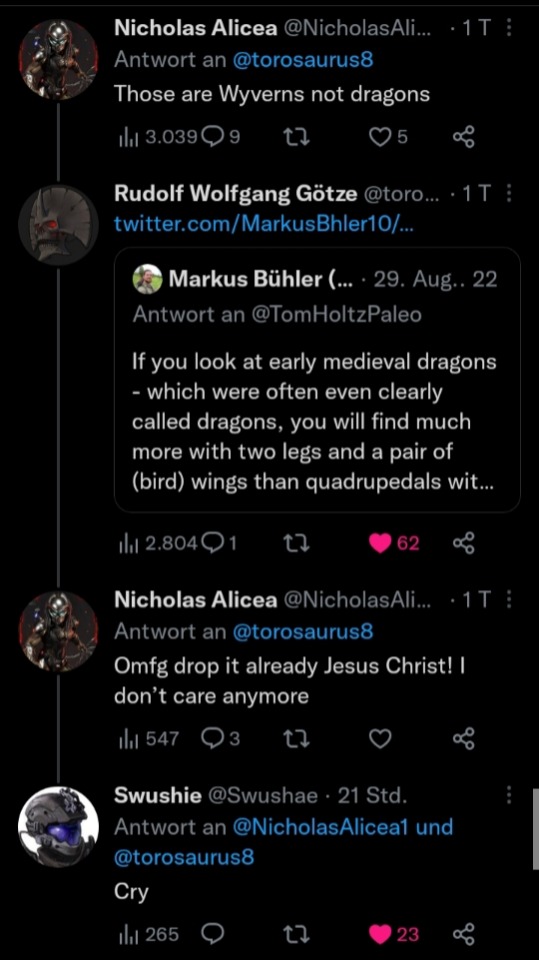
The thread can be found here. Also check out the awesome artwork by Rudolf Wolfgang Götze.
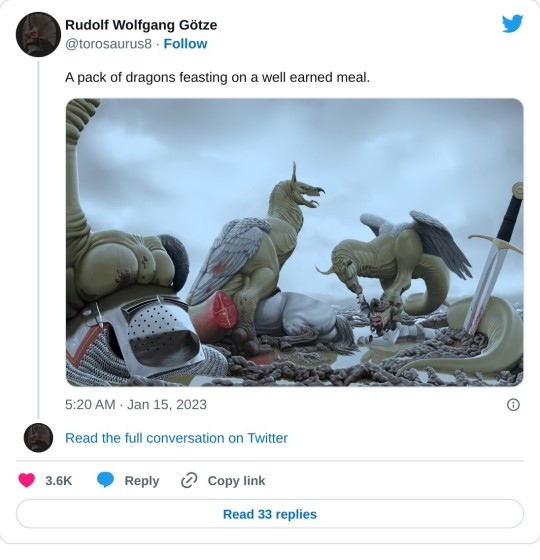
115 notes
·
View notes
Text
They called it a Lindwurm in the German localization.
It reminds me of how Final Fantasy just named its monsters whatever they wanted, named their color swaps something completely different and then sometimes gave them different names in English again.
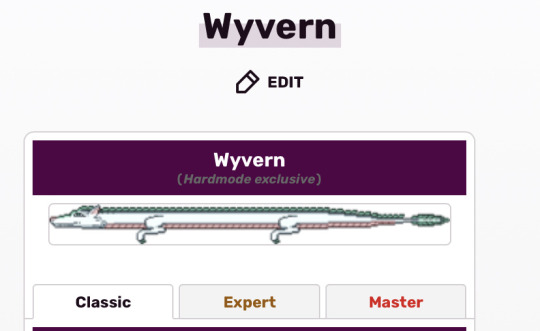

I wonder what the people who point out when dragons in games and shows are “technically wyverns” think of this
684 notes
·
View notes
Text
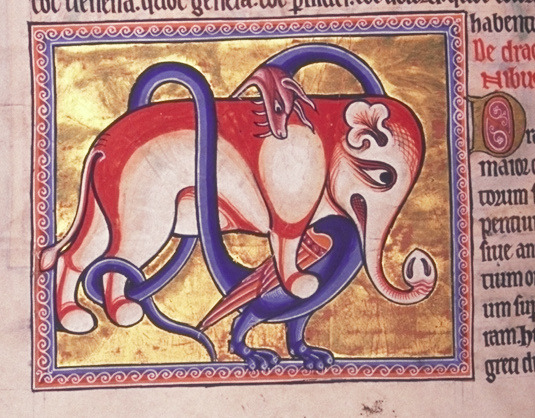
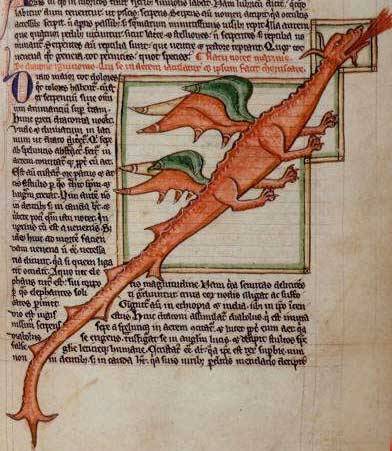
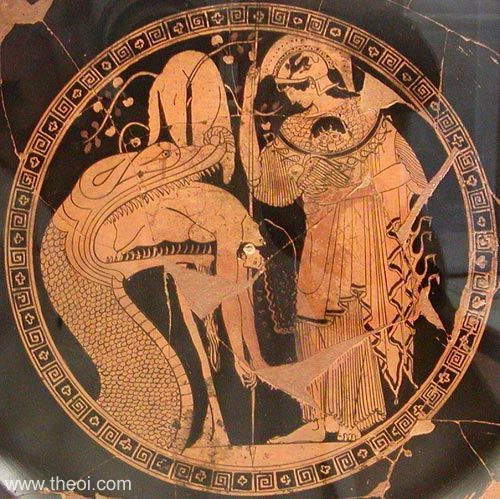
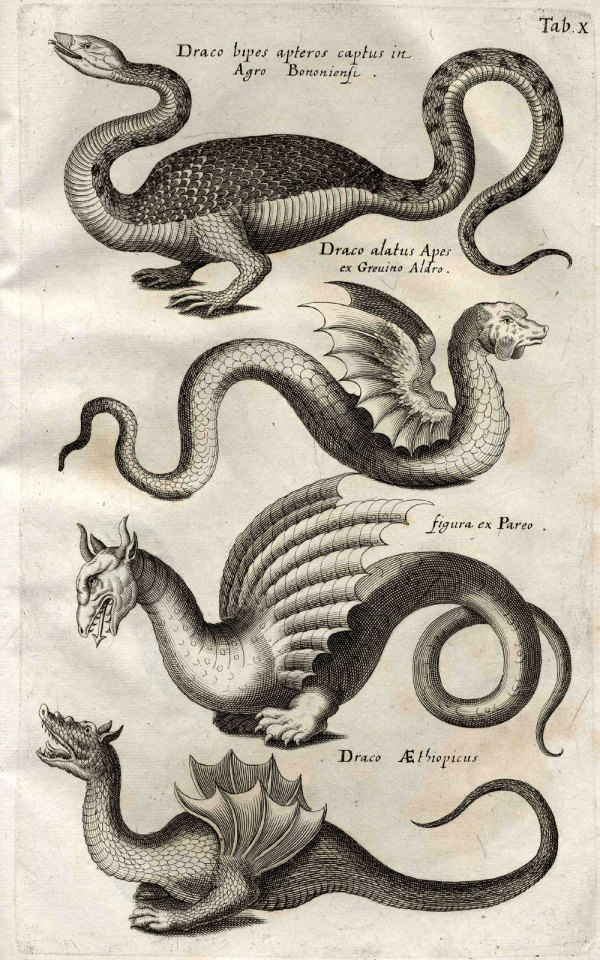
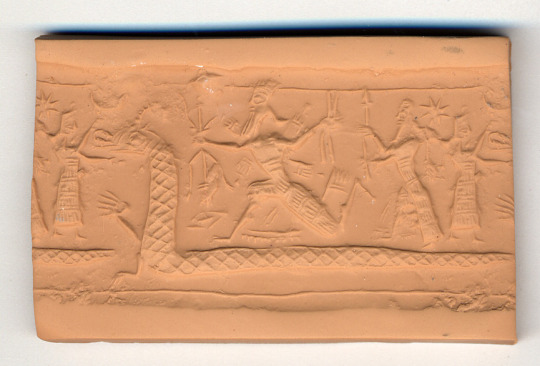
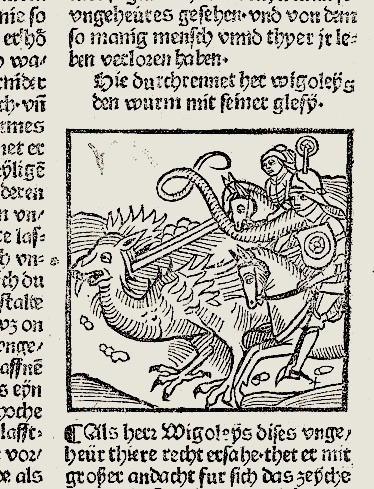
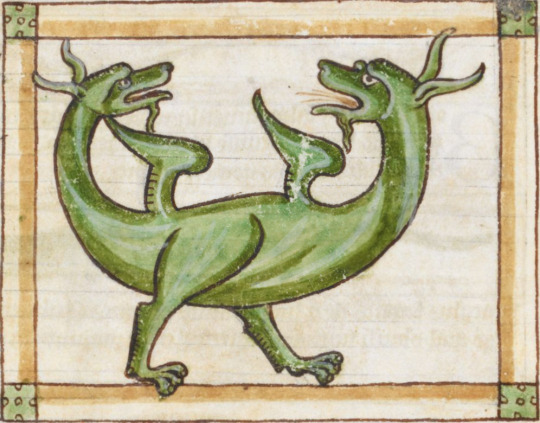
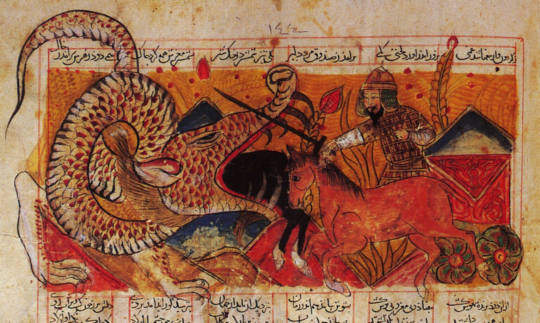
^ healthy and diverse breeding practices
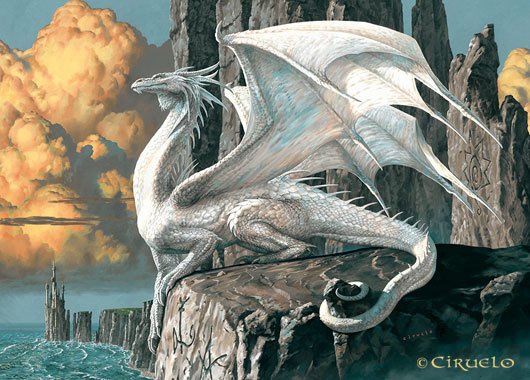
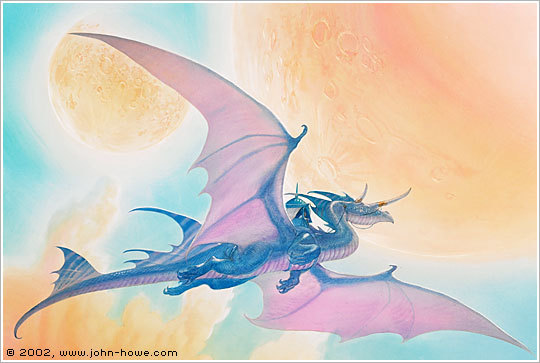



^ wild inbreeding in pursuit of uniformity and an arbitrary ideal of breed "purity" resulting in gross health complications
But don't get me wrong, there's still diverse dragons today:






so there's still hope for the future.
Just to keep in line with my user name I must state sea dragons that have four legs and wings make me feral not because there is anything wrong with the design but because it reinforces that all other dragons that don't have that design aren't dragons when sea serpents and other water dragons are some of the most common dragons in mythology throughout history
11 notes
·
View notes
Photo
Something like that



#western dragon#wyvern#tarasque#six legged#multi headed dragon#antidracoprescriptivism#dracoprescriptivism
83K notes
·
View notes
Photo
Not sure how this qualifies as a dragon, but it's called dragon so it belongs here

dragon
652 notes
·
View notes
Text
Important explanations regarding the dragon meme
FAQs about my dragon meme
Because I have the insidious need to educate people.
1. Why are these dragons?
The answer is actually pretty complicated. I never meant for this to be a reference guide and I cringe every time I see it tagged that way. The source materials for ancient myths are inconsistent, often unintelligible, and never as straightforward as modern retellings would have people believe. If I could encapsulate the entire history and discourse surrounding dragons into a batch of silly pictures I would be a mythical being myself. Steveneque, if that’s not too conceited to say. However, if an author/culture says it’s a dragon it is, as long as it’s referential to Eastern and/or Western mythological traditions.
So why did I choose these examples? All of them belong to a tradition that led to western and/or eastern dragons. I’m going to focus on the west because the original image was about English and French dragons (dragon vs wyvern). A western/middle eastern dragon is an archetypal monster representing evil/chaos, with serpentine qualities (”Dragon” comes from the Greek “Drakkon” which means Monstrous Serpent), who is slain by a hero/god, and may or may not guard treasure or ladies (Eastern Dragons lack the whole evil/getting slain angle since India/the far east are more positive about snakes). Am I being too general calling all these monsters dragons? Sure, there are ample reasons to argue that, including the fact that some of these creatures are not consistently described as chaos monster snakes within ancient sources. However, is the act of giving them this label, which is perceived to be European in origin, an insensitive act of erasure or conceptual theft not unlike Christians labeling pagan gods Satan, or the Romans collecting foreign gods like they were pokemon? NO. Europe didn’t invent dragons and dragons are not unique to Europe. European style dragons, like the Welsh four-legged-two-winged dragon (which was developed AFTER the medieval period btw) are currently popular but are only recent additions to the mythological dragon archetype, which was first seen in Mesopotamia. It’s not appropriation to have a word for something in your own language, Susan! The person I’m referring to may or may not be named Susan– but that name seems fitting for a white girl making accusations about racism with an argument that blatantly reveals her own cultural ignorance, therefore proving the inverse of her claims. Sorry any cool Susans reading this. What’s more, when the Romans thought Zeus and Jupiter could potentially be the same guy, they might not have been wrong. The idea that cultures are static, isolated systems and that ideas do not travel and become adapted to new contexts is, well, wrong. Zeus and Jupiter, as well as a many other sky gods may be retellings of an original story. Same goes for dragons, which is why I cite Comparative Mythology, as it explores the origins of myths. The Comparative Mythology concept Chaoskampf connects different creatures that have historically served the same role as modern dragons, whether you think they’re dragons or not. I hope that through learning about these myths people will look beyond the Smaug-style high-fantasy cliche when they create their own worlds.
Fantasy applies mythology or mythological themes to tell a new story. Tolkien did a ton of research before he wrote his books, but since then people have lazily used his world or DnD to do the research for them. That fantasy is falling into a standard pattern, that dragons are being limited to a single depiction– well, I find that very sad. I feel the same way about elves, dwarves, vampires and all the other cliche fantasy critters. So many people are not looking into the base myths or into other cultures.
2. IS a Wyvern a Dragon?
Hey, repeat after me, if it’s called a dragon, IT’S A DRAGON.
Medieval Heraldry created it’s own symbolic language in order to interpret coat-of-arms. Since there was originally no standard for depicting dragons there was a lot of variation, so medieval Heralds began assigning names to specific designs.
Before a distinction was made between four-legged and two-legged dragons they were both called dragons, as you can see when comparing the Red Dragon of Wales (y Ddraig Goch) and the Gold Dragon of Wales (Y Ddraig Aur). After the 1600′s people started referring to two-leggers as Wyverns thanks to the French. In French folklore there is a mythical creature called a Guivre (Wyvern in English) that is small, dragon-like, and spits poison. It is almost always depicted as having two-legs and two-wings, therefore when these Heralds were making their dragon distinctions, they started calling all dragons with that design Wyverns. But here’s the thing, the Gold Dragon of Wales is NOT a French Guivre. Saying that all two-leggers are Wyverns is like saying all rectangles are squares. Wyverns are a different type of mythological beast (in some bestiaries, others do consider them proper dragons), but if the critter in question is called a dragon, that’s what it is. They might have Wyvern-like anatomy, therefore it could be useful to refer to them as Wyvern-style when comparing them to other dragons, but if they’re called dragons THEY ARE DRAGONS. STOP.
Also, if you’re gonna use the number and type of limbs as the basis for your argument, you’re gonna need to argue that lindworms aren’t dragons, nor are any of the multi-head dragons, or aquatic finned dragons. I don’t think Scandinavia, Eastern Europe, or the continent of Asia are going to like that very much. Oh yeah, and EVERYONE BEFORE THE 1600s.
The four-legged Red Dragon was on the coat-of-arms of England, so as English speaking people we refer to it plainly as Dragon. If the Welsh had stuck with the Gold Dragon, we’d be calling two-leggers dragons and four-leggers some foreign name.
Your monster manual is not universally applicable, son.
3. That’s Anzu, not Kur!!
Yes, please see the latest version of my meme. Anzu is gone and now there’s Tiamat.
I just want to take a moment to point out that I’ve never had more than 400 likes/followers/anything before. I made this image in response to this Tweet, I whipped it up in two hours, it got 9 likes and 5 reposts on Twitter which is about what I expected. I never dreamed that I would be reblogged by Wil Wheaton, get tens of thousands of likes/reblogs and be held to an incredible amount of scrutiny.
When I googled Kur, the image I used appeared repeatedly so I assumed it was Kur. I had never heard of Anzu, yet I did realize my mistake before anyone pointed it out, because as people were growing more critical I went back and checked my sources. So for everyone crying Anzu after the fact, I’m sorry if I respond “I knoooooooow” because holy crap I knoooooooow.
4. Why are Dragons so widespread? I dunno. No one does. There are a lot of theories and they could all be correct to a certain degree, except the theory that dragons were real. No friends… no. Not literally, at least. One theory is the Comparative Mythology concept, Chaoskampf: there was an original dragon myth that spread via cultural diffusion.
Another theory is that ancient people found dino-bones and got really confused. Thing is, Dinosaur bones only appear in certain geographical areas and they are rarely all together enough that you can tell that they’re a skeleton. A simple explanation is that dragons and many other mythological creatures come from a bad game of telephone where ancient people tried to explain crocodiles, oarfish, or other real life animals.
My favorite theory, that I only like because it is cool, was presented in the book An Instinct for Dragons. It postulates that dragons are widespread because they come from a vestigial ancient fear of snakes, birds, and wild cats; that dragons are our literal ancient enemies. It’s bogus but I love it.
If you know any other theories, please share.
5. Do you know Trogdor?
Trogdor was a man. I mean, he was a dragon-man. Or maybe he was just a dragon. But he was still TROGDOOO- I know. I went online during the early 2000′s. I love the Burninator but come on, that’s low hanging fruit don’t you think? I prefer to make up my own jokes. Speaking of jokes-
6. Why is Steve labeled Steve?
…
#wyvern#western dragon#welsh dragon#trogdor#steve#dracoprescriptivism#antidracoprescriptivism#asian dragon
80 notes
·
View notes